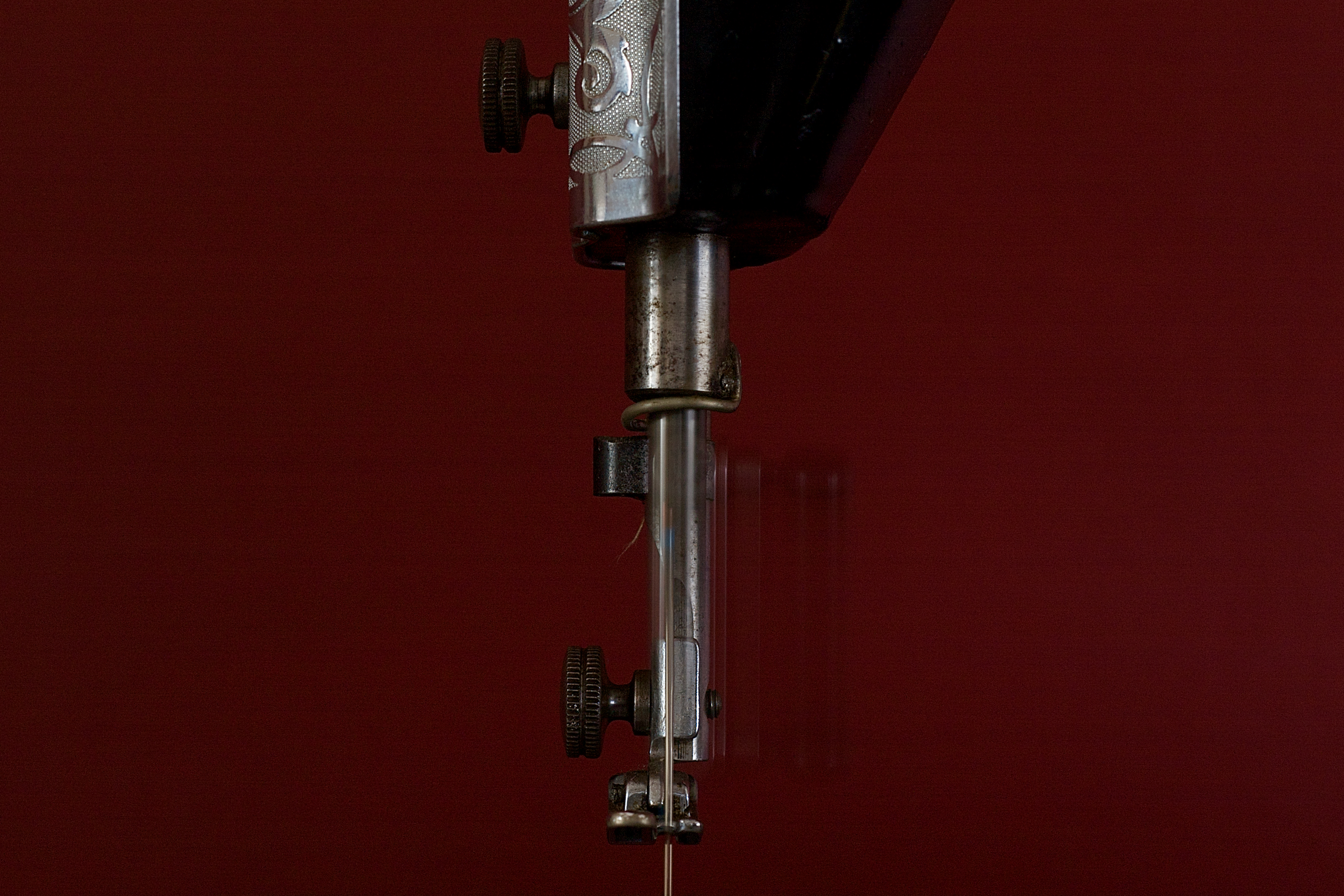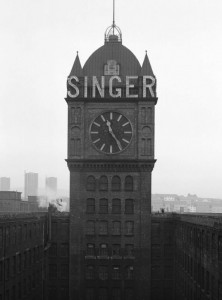Singer sewing machine

My mother, a textiles artist and teacher, recently gave me this old Singer manual sewing machine.
She had learned to sew on one very similar in the 1950s and 60s and bought this model second-hand in the 1980s for her students to use in classes.
I remember seeing a similar machine at my Grandmother’s home, mounted to a table with a cast iron treadle underneath to power the machine by foot. I was fascinated by that machine, and the electric one my mother had at home when I was a child: the highly specialised form, and the motion and gearing between the wheel and the needle assembly. Most other functional objects we had in the house were just rectangular boxes with no access to — or exposure of — their functioning parts. But you could almost reverse-engineer a sewing machine just by turning the wheel and watching the motion flow through the machine.
Sewing machines (mechanical ones in particular) exhibit a level of technical sophistication that is simple enough to be graspable in your mind, but at the same time impressive in effect. When I look at the construction of a backpack or a pair of jeans, I’m amazed that it’s possible to construct something so complex, and with such fine tolerances, working by hand with such imprecise, organic materials.
The earliest sewing machines, made in the late 19th Century, were among the first ‘domestic appliances’. Being affordable and compact, they paved the way for the democratisation of sewing. Anyone (which at that time, likely meant any woman) could now be a seamstresses or tailor.
 This model is a 66k class Singer machine (serial number Y1017645). It was made in 1923 at Singer’s Kilbowie Factory in Clydebank, Glasgow. The Kilbowie factory was an impressive place, almost like a cathedral in its grandeur, having a “famous clock tower, with the largest [clock] faces in Scotland“.
This model is a 66k class Singer machine (serial number Y1017645). It was made in 1923 at Singer’s Kilbowie Factory in Clydebank, Glasgow. The Kilbowie factory was an impressive place, almost like a cathedral in its grandeur, having a “famous clock tower, with the largest [clock] faces in Scotland“.
Clydebank was also the area where my great Uncle Keith worked as a young minister. It’s difficult for people of my generation to imagine such a vast district devoted to manufacturing. Indeed, the closest contemporary architectural comparison would be with a Chinese manufacturing zone, of the kind photographed by Edward Burtynsky. The very place to which our manufacturing has been ‘off-shored’.
The Singer factory was demolished some time around the 1990s, and judging by satellite photographs and Google Street View, is now a business and industrial park.
You can find out more about old Singer sewing machines at:
www.sewmuse.co.uk/singerintro.htm
My photos of the Singer machine are on Flickr